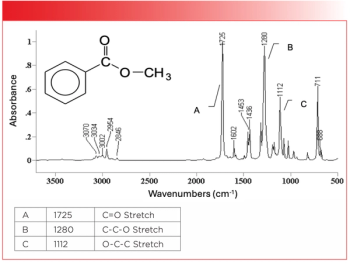
Time-resolved Infrared Spectroscopy for Monitoring Fast Chemical Changes
Webinar Date/Time: Tue, Apr 11, 2023 1:00 PM EDT
This will be an overview of modern FT-IR spectrometry to demonstrate the collection of a complete spectrum within 10 ms in the rapid-scan mode. A few nanoseconds’ time resolution can be achieved for the repetitive reactions in the step-scan mode.
Register Free:
Event Overview:
Infrared (IR) spectroscopy is highly specific for identifying chemical composition because each compound has a characteristic IR spectrum that serves as a “fingerprint” to uniquely identify the compound. This makes IR spectroscopy the widely used technique for monitoring changes in chemical composition during reactions. Modern FT-IR spectrometers collect a complete spectrum within 10 ms in the rapid-scan mode. A few nanoseconds time resolution can be achieved for repetitive reactions in the step-scan mode. An introduction to time-resolved FT-IR spectroscopy and optimization of the experimental setup will be discussed in the first part of the webinar. Examples of applications will include photosensitive proteins studies, polymer curing, and a stop-flow.
Key Learning Objectives:
- Learn about time-resolved FT-IR spectroscopy.
- Learn how to quickly and accurately monitor changes in chemical composition during reactions.
- Understand various chemical applications utilizing FT-IR Spectrometry
Featured Speakers:
Dr. Sergey Shilov
R&D Product Manager, North
America
Bruker Optics
Dr. Sergey V. Shilov is the R&D Product Manager for North America at Bruker Optics. Sergey joined Bruker in 2001. He is responsible for the support and development of new applications for the Bruker research FT-IR systems. He received his Ph.D. in 1992 from the Russian Academy of Sciences in Polymer Physics and his M.S. from St. Petersburg State University (Russia) in Physics in 1986. The Alexander Von Humboldt foundation (Germany) awarded him a research fellowship in 1996. Sergey published 37 papers in peer-reviewed journals. His research interests include time-resolved FT-IR spectroscopy, surface science, polymer, and life-science applications.
Register Free:
Newsletter
Get essential updates on the latest spectroscopy technologies, regulatory standards, and best practices—subscribe today to Spectroscopy.




